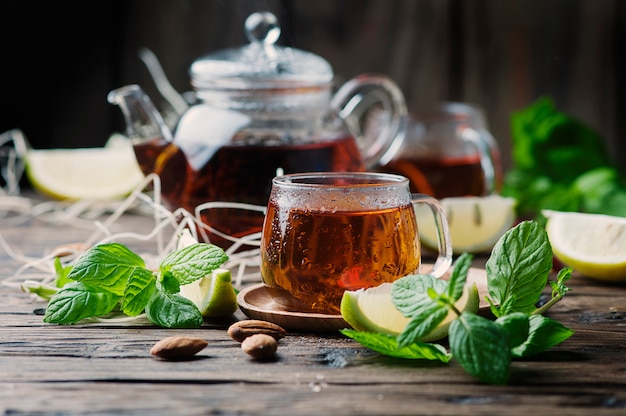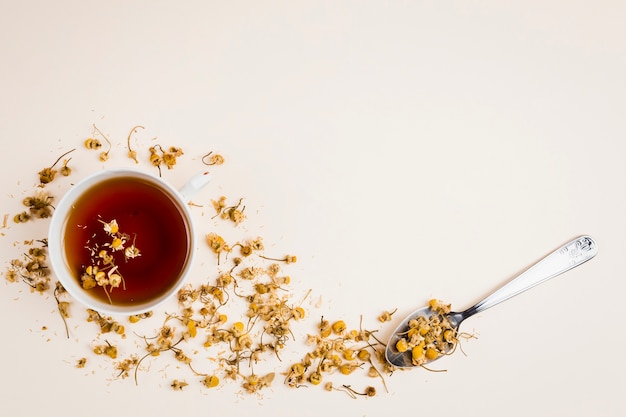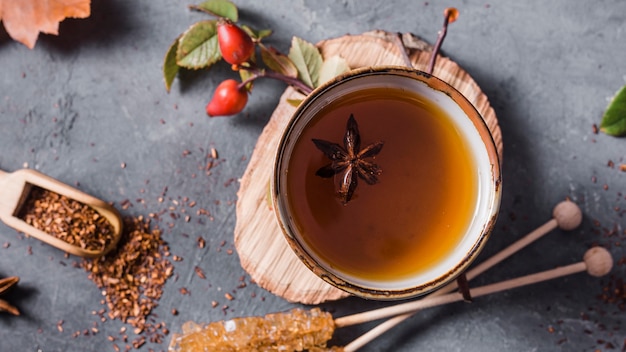आयुर्वेदिक डॉक्टर से प्रश्न पूछें और निःशुल्क या भुगतान मोड में अपनी चिंता की समस्या पर ऑनलाइन परामर्श प्राप्त करें। 2,000 से अधिक अनुभवी डॉक्टर हमारी साइट पर काम करते हैं और आपके प्रश्नों का इंतजार करते हैं और उपयोगकर्ताओं को उनकी स्वास्थ्य समस्याओं को हल करने में प्रतिदिन मदद करते हैं।
अभी हमारे स्टोर में खरीदें
Chavikasavam Uses: Benefits, Research, and Practical Insights

Introduction: A Fermented Tradition with Modern Relevance
Imagine a herbal concoction passed down for generations that harnesses the power of fermentation to enhance its therapeutic potency. This is precisely what you get in Chavikasavam—an Ayurvedic formula known for its distinctive taste, aroma, and potential health benefits. Often revered in traditional Indian medicine, Chavikasavam uses a combination of herbs and spices, fermented in a specific manner to produce a potent tonic.
In recent years, there has been growing interest in herbal and fermented remedies. Modern science is increasingly looking into these traditional formulas to understand their active compounds and how they might support various aspects of health. This article aims to delve into the multifaceted role of Chavikasavam, highlight its potential benefits, scrutinize current research, and provide practical guidelines for safe usage.
Disclaimer: This information is for educational purposes only and should not replace professional medical advice. Always consult a qualified healthcare provider before making changes to your health regimen.
Table of Contents
-
What Is Chavikasavam?
-
Key Ingredients and Their Roles
-
The Fermentation Process in Ayurveda
-
Potential Benefits & Scientific Perspectives
-
How to Use Chavikasavam
-
Precautions and Side Effects
-
Frequently Asked Questions (FAQ)
-
Conclusion: Balancing Tradition and Modern Science
1. What Is Chavikasavam?
Chavikasavam is an Ayurvedic fermented tonic (arishta) widely mentioned in classical texts such as the Bhaishajya Ratnavali. Unlike simple herbal decoctions, Ayurvedic ferments undergo a natural fermentation process. This process is believed to enhance the bioavailability and potency of the herbs.
Core Principles Behind Chavikasavam:
-
It is formulated to support digestion, metabolism, and overall vitality.
-
Fermentation is believed to produce probiotic-like effects, fostering beneficial gut flora.
-
It contains a blend of pungent, bitter, and sweet herbs that may offer a broad therapeutic range.
While its formulations vary slightly among different manufacturers, the overarching principle remains consistent: harness the synergy of multiple herbs to promote well-being.
2. Key Ingredients and Their Roles
One of the unique aspects of Chavikasavam is its multi-ingredient composition. Although specifics can vary, some of the commonly used herbs include:
-
Chavya (Piper retrofractum)
-
Main active ingredient that imparts a pungent flavor.
-
Traditionally used to support digestive fire (agni) and relieve bloating or discomfort.
-
-
Dhaniya (Coriandrum sativum)
-
Rich in essential oils like linalool.
-
Traditionally recognized for its cooling and carminative properties.
-
-
Chitrak (Plumbago zeylanica)
-
Known for its potent, warming characteristics.
-
Frequently used to kindle digestion and relieve sluggish metabolism.
-
-
Shunti (Zingiber officinale, or ginger)
-
Contains gingerols and shogaols.
-
Widely studied for its anti-inflammatory and digestive-supportive properties.
-
-
Maricha (Piper nigrum, or black pepper)
-
High in piperine, which can enhance the absorption of other nutrients and herbal constituents.
-
-
Guda (Jaggery)
-
Natural sweetener that also serves as a fermenting agent in Ayurvedic preparations.
-
Provides nutrients like iron and minerals, potentially improving the overall nutritional profile.
-
Note: These ingredients are combined and fermented over days or weeks, which can transform their chemical structure and potency. The end result is a liquid that contains both water-soluble and partially alcohol-soluble compounds, contributing to its distinct therapeutic profile.
3. The Fermentation Process in Ayurveda
Fermentation has been a key component in Ayurvedic pharmaceutics for centuries. It’s not just about prolonging shelf life; it’s also about:
-
Enhancing Bioavailability: Fermentation can break down complex compounds into more easily absorbable forms.
-
Developing Beneficial Microbes: Much like modern probiotics, Ayurvedic ferments like Chavikasavam may contain beneficial microbes, although the exact microbial composition can vary.
-
Balancing Doshas: Ayurveda traditionally categorizes bodily energies into three doshas—Vata, Pitta, and Kapha. Fermented preparations are believed to have a balanced effect, supporting the digestive system (which heavily influences doshic balance).
From a modern scientific viewpoint, fermentation might increase the levels of certain phytochemicals. Research in the Journal of Ethnopharmacology suggests that fermented herbal preparations often exhibit enhanced antioxidant activity and may offer additional physiological benefits such as improved digestion. However, more clinical trials are needed to solidify these claims.
4. Potential Benefits & Scientific Perspectives
4.1 Digestive Support
-
Pungent Herbs for Enhanced Digestion: Ginger, black pepper, and chavya are well-documented for their roles in aiding digestion. A study published in Phytotherapy Research (2018) noted that ginger extracts might alleviate mild gastrointestinal discomfort.
-
Gut Microbiota Implications: The natural fermentation process could introduce or foster beneficial microbes, although specific strains in Chavikasavam remain under-investigated in clinical settings.
4.2 Metabolic Boost
-
Thermogenic Properties: Piperine in black pepper and gingerols in ginger may offer mild thermogenic effects, potentially aiding metabolic rate.
-
Weight Management: While not a direct weight-loss supplement, optimizing digestion and metabolism can indirectly support healthy body composition. Preliminary studies in Frontiers in Nutrition indicate that fermented herbs can assist in metabolic balance, but more human trials are required.
4.3 Antioxidant & Anti-Inflammatory Effects
-
Polyphenols and Flavonoids: Ingredients like coriander and ginger are rich in antioxidants, potentially protecting cells from oxidative stress.
-
Inflammatory Pathways: Compounds such as gingerols, piperine, and plumbagin (from Plumbago zeylanica) have been studied for their possible anti-inflammatory mechanisms. However, the synergy of these compounds in Chavikasavam specifically requires more targeted research.
4.4 Traditional Respiratory and Circulatory Benefits
-
Warm, Spicy Profile: Some Ayurvedic texts reference Chavikasavam for relieving mild respiratory congestion. Although scientific data is limited, lab studies on ginger and pepper show potential benefits for clearing mucus.
-
Circulation: Pungent spices can stimulate circulation, which Ayurveda associates with enhanced nutrient delivery and detoxification.
4.5 Other Reported Uses
-
Mild Analgesic Effects: Ayurveda attributes subtle pain-relieving properties to some ingredients.
-
Immunity and Vitality: Traditional practitioners frequently recommend Chavikasavam as a general tonic. Emerging research on similar fermented Ayurvedic products points to immune-modulating effects, but robust clinical data on Chavikasavam itself is scarce.
Important: While these potential benefits are intriguing, they are mostly extrapolated from preliminary studies, animal research, or related herbal compounds. Always refer to peer-reviewed scientific literature or consult a qualified Ayurvedic practitioner for personalized advice.
5. How to Use Chavikasavam
5.1 Recommended Dosage
In classical Ayurveda, Chavikasavam is typically prescribed in small doses, around 15 to 30 milliliters once or twice daily, after meals. Dosage can vary depending on:
-
Age and overall health condition
-
Specific health goals
-
Professional recommendation by an Ayurvedic physician
5.2 Best Practices
-
Timing: Consuming after meals can aid digestion and help assimilate nutrients.
-
Mixing: Some prefer diluting Chavikasavam in an equal amount of water to lessen the pungent taste.
-
Dietary Considerations: Ayurveda often advises a balanced diet tailored to your body type (Prakriti). Pairing Chavikasavam with a wholesome, easily digestible diet may optimize its benefits.
-
Lifestyle Factors: Adequate hydration, light exercise, and stress management can amplify the positive effects of herbal tonics.
6. Precautions and Side Effects
6.1 Potential Side Effects
-
Digestive Discomfort: High doses or misuse can lead to acidity or an upset stomach, given the pungent nature of the herbs.
-
Allergic Reactions: Though rare, individuals with allergies to specific ingredients like ginger or black pepper should exercise caution.
-
Alcohol Content: As a fermented tonic, Chavikasavam might contain low levels of naturally occurring alcohol (~2-10%, varying by manufacturer). This may concern those with certain health conditions or restrictions.
6.2 Contraindications
-
Pregnancy and Lactation: Limited clinical data exists. Pregnant or breastfeeding women should consult their healthcare provider before use.
-
Pre-existing Conditions: Individuals with chronic diseases (e.g., kidney disorders, liver diseases, or diabetes) should seek medical advice due to potential interactions or sugar content from jaggery.
-
Medication Interactions: Some ingredients may interact with medications like anticoagulants or antiplatelet drugs. Always disclose all supplements to your physician for comprehensive care.
7. Frequently Asked Questions (FAQ)
Q1: Is Chavikasavam suitable for children?
A1: Generally, Ayurveda advises cautious administration of any fermented preparation to children. If needed, an Ayurvedic practitioner might recommend a lower dose based on the child’s age and health condition. Always consult a pediatrician or qualified Ayurvedic doctor first.
Q2: Can I take Chavikasavam on an empty stomach?
A2: It’s usually recommended to consume it after meals to reduce the risk of gastric irritation due to its pungent ingredients. Consult your healthcare provider for personalized advice.
Q3: How long does it take to see results?
A3: Herbal tonics often work gradually. Some individuals notice digestive improvements within a few weeks, while other benefits (like metabolic support) may take longer. Consistency and complementary lifestyle choices matter.
Q4: Can I combine Chavikasavam with other Ayurvedic formulations?
A4: Yes, but it’s best to do so under professional guidance. Combining multiple tonics may produce overlapping effects that can either be synergistic or counterproductive.
Q5: Are there any scientific studies supporting Chavikasavam’s effectiveness?
A5: Although various herbs in the formula have been studied for their health-promoting properties, clinical research focusing on Chavikasavam itself remains limited. Ongoing studies aim to analyze its phytochemical composition and therapeutic potential.
8. Conclusion: Balancing Tradition and Modern Science
Chavikasavam uses ancient Ayurvedic wisdom and a time-tested fermentation process to create a tonic that may support digestion, metabolism, and overall health. While modern science partially backs the benefits of individual ingredients like ginger, black pepper, and coriander, comprehensive clinical evidence on Chavikasavam specifically is still emerging.
Despite the need for further research, Chavikasavam remains a fascinating example of Ayurveda’s holistic approach—focusing on balancing the body’s internal energies (doshas) and supporting natural bodily functions. When used responsibly, and under qualified guidance, it can be a valuable addition to one’s wellness regimen.
Key Takeaways:
Consult an Ayurvedic practitioner or medical professional for personalized recommendations.
Start with low to moderate dosages and observe how your body responds.
Combine this tonic with balanced diet, regular exercise, and healthy lifestyle practices for optimal results.
Next Steps and Call to Action
If you found this article helpful, please share it with friends, family, or colleagues who might benefit from learning about Chavikasavam. Feel free to leave a comment below on your experiences or any questions you may have. For more in-depth Ayurvedic insights, subscribe to our newsletter or follow us on social media for the latest updates and research-backed articles on herbal medicine.
References and Further Reading
-
Bhaishajya Ratnavali – An authoritative Ayurvedic text describing medicinal formulations.
-
Journal of Ethnopharmacology – Various studies on fermented herbal preparations.
-
Phytotherapy Research – Peer-reviewed articles on the therapeutic effects of ginger.
-
Frontiers in Nutrition – Research on fermented foods and metabolic health.
-
World Health Organization (WHO) – Guidelines on the use of traditional and complementary medicine.
Disclaimer: The content in this article is for informational purposes and does not substitute professional medical advice. Always consult with a qualified healthcare practitioner for individualized care.
यह लेख वर्तमान योग्य विशेषज्ञों द्वारा जाँचा गया है Dr. Harsha Joy और इसे साइट के उपयोगकर्ताओं के लिए सूचना का एक विश्वसनीय स्रोत माना जा सकता है।




